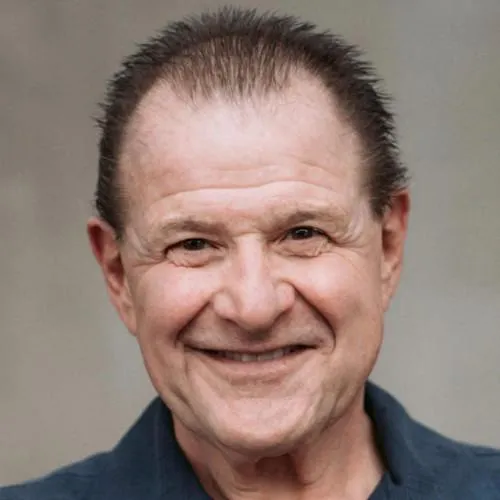The Human View™ Blog

Targeted Motivational Messaging
Benefit program engagement continues to face the persistent challenge that - despite our best educational efforts - many employees just don't enroll in programs that can help them. You could call the choice not to enroll as "suboptimal," because not to seek support and guidance can impact their health, their financial wellbeing and their employer's bottom line.
The traditional "education-only" approach to benefits communication simply isn't driving the critical mass of enrollment and engagement needed towards enrolling in cost-effective health plans and voluntary benefit programs.

Beyond education: understanding the engagement gap
The fundamental issue isn't that employees lack information. Rather, they lack the motivation that resonates with their personal values and decision-making frameworks. Consider the High Deductible Health Plan (HDHP) scenario: data consistently shows that most employees would save money with an HDHP compared to higher premium plans, as they rarely reach the maximum out-of-pocket exposure. Yet enrollment often lags behind projections.
Why? Because we're answering questions employees aren't asking, while failing to address their actual concerns: "What's in it for me?" and "Why should I care?"
The neuroscience behing decision-making
Neuroscience research reveals that decisions about benefits aren't purely rational. They're influenced by emotional drivers, risk perceptions, and value frameworks that vary significantly across employee populations. Traditional communications that emphasize plan details and potential savings often fail to connect with these deeper motivational triggers.

When an employee reviews benefits options, their brain isn't simply calculating numbers—it's evaluating choices through personal lenses shaped by experiences, values, and fears. Different segments approach healthcare and benefits decisions through entirely different mental frameworks, which reveal predictable patterns as to how they respond to messaging.
The amygdala—our brain's emotional center—often overrides the prefrontal cortex's logical analysis when uncertainty is involved. This explains why many employees default to higher-premium plans despite clear financial evidence favoring HDHPs; the emotional security of "known costs" outweighs rational cost analysis. Targeted motivational messaging addresses both the emotional and rational aspects of decision-making.
Psychographic profiling: the foundation of targeted messaging
Unlike demographic targeting (age, income, etc.), psychographic segmentation identifies employees by their specific attitudes toward healthcare, wellness priorities, and decision-making styles. Research has identified distinct segments that respond to fundamentally different benefit messaging approaches:

Self-Achievers are proactive about health and respond to messages emphasizing performance optimization and personal control
Balance Seekers appreciate holistic approaches and respond to messaging that connects physical, emotional and financial wellbeing
Priority Jugglers make healthcare decisions based on family needs and respond to messaging about protection and security
Live-for-Todays are present-focused and respond to messaging highlighting immediate benefits and simplicity
Health Strivers are actively working to improve health and respond to supportive, encouraging messaging about progress
Treatment Believers prioritize professional medical care and respond to messages emphasizing quality coverage and expert access
By mapping these psychographic profiles across your employee population, we can develop tailored motivational messaging that addresses each group's unstated concerns and values

From communication, to comprehension, to conversion
The shift from education-only communication to targeted motivational messaging transforms the entire benefits enrollment experience. Instead of overwhelming employees with information and hoping they'll make optimal choices, this approach proactively addresses their specific motivational triggers:
For Self-Achievers hesitant about an HDHP, messaging might emphasize control over healthcare spending and investment opportunities through HSAs. For Priority Jugglers, messaging can demonstrate how pairing an HDHP with voluntary benefits creates comprehensive family protection at lower total cost.
These targeted approaches acknowledge the psychological barriers many employees face—like loss aversion and status quo bias—and reframe choices to overcome these obstacles rather than simply providing more information.

Implementation and measurable results
Organizations implementing targeted motivational messaging typically see 15-30% higher enrollment in cost-efficient health plans and significantly improved voluntary benefits uptake. The approach works because it transforms benefits decisions from complex cognitive challenges into clear, personally relevant choices aligned with employees' existing value frameworks.
One manufacturing client increased HDHP enrollment by 23% after implementing psychographic messaging, resulting in premium savings of approximately $1.2 million while also increasing voluntary benefit participation, which provided employees with appropriate safety nets for their new health plans.
As benefits consultants and brokers, our role must evolve beyond education to include motivational science. This doesn't diminish the importance of clear information—rather, it recognizes that information alone rarely drives action. By combining robust education with targeted motivational messaging that speaks to each psychographic segment's values, we create communications that both inform and inspire.

The last word
By speaking to what employees actually care about—not just what they need to know—targeted motivational messaging bridges the crucial gap between education and action, creating benefits programs that better serve both employees and organizational objectives. The result is higher engagement, more cost-effective choices, and ultimately, a stronger benefits strategy that delivers on its promise to both employers and their workforce.
~ Mark Head
© 2025. All Rights Reserved.
Click the green button or the blue button (below) to visit our scheduling pages.




Mark Head
President
With 4 decades of combined experience in employee benefits consulting, wellness and health management, Head brings a unique combination of dynamic perspectives into a clear vision of where the future of health care is moving - and it's moving towards deeper human connection, awareness, and engagement...
Follow Us On
© 2015 - 2025, MDH Consulting, LLC. All Rights Reserved.

